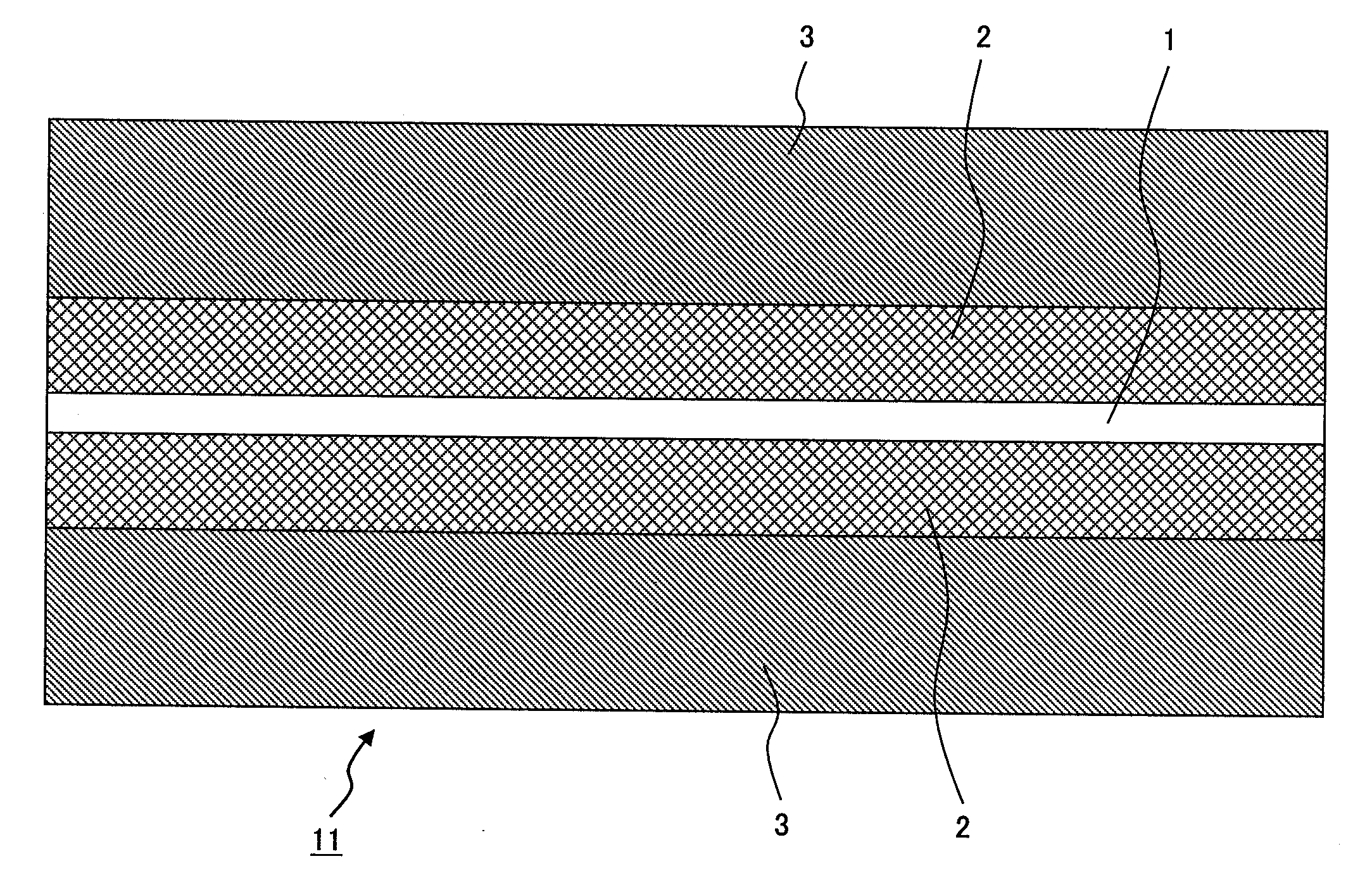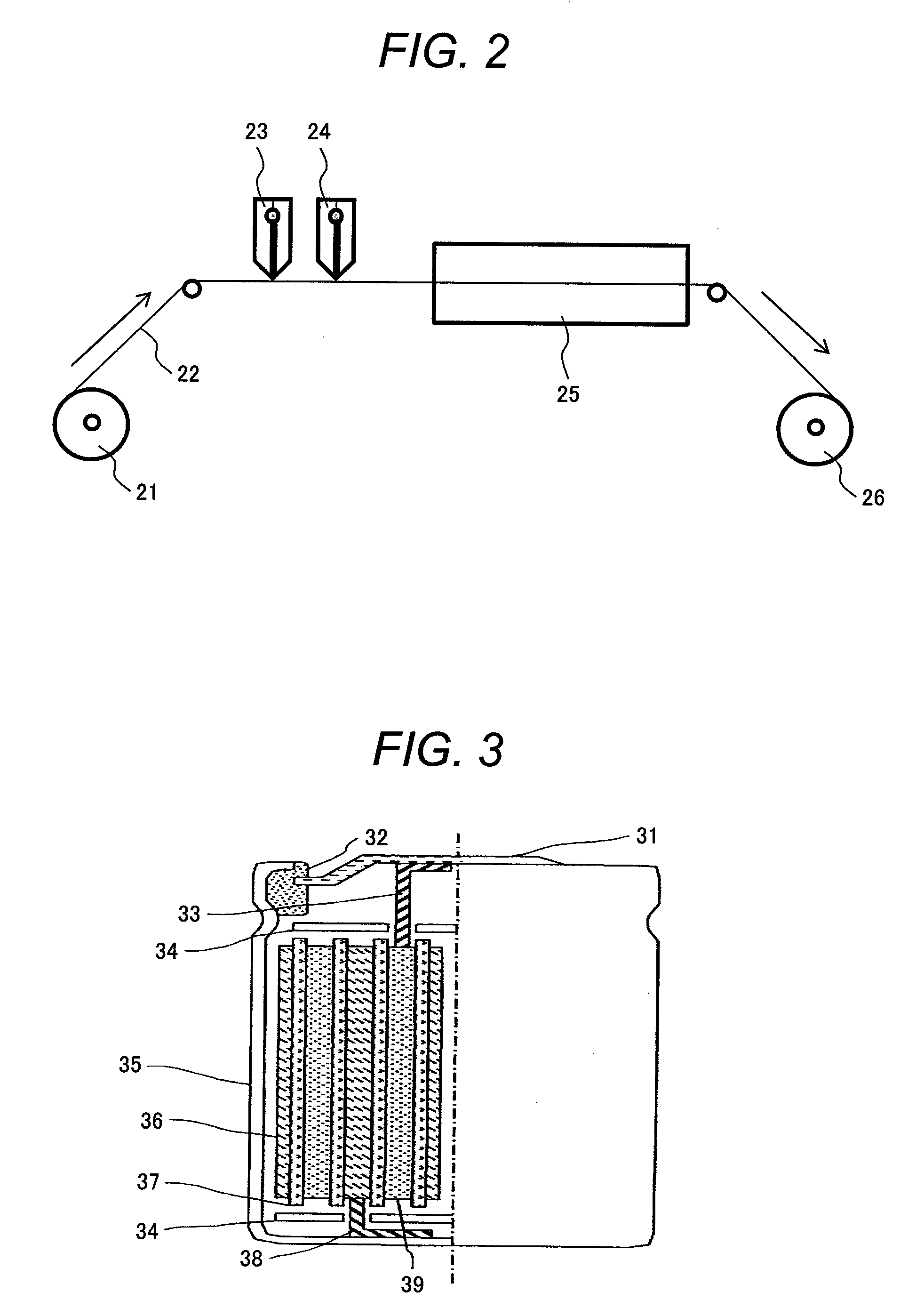Secondary lithium battery
a lithium battery and secondary technology, applied in the field of secondary lithium batteries, can solve the problems of small output quantity of cobalt which is a material of lithium cobalt oxide and high cost, and achieve the effects of large thickness, excellent binding property and oxidation resistance, and excellent flexibility
- Summary
- Abstract
- Description
- Claims
- Application Information
AI Technical Summary
Benefits of technology
Problems solved by technology
Method used
Image
Examples
example 1
(Synthesis of Active Material)
[0104]NH4H2PO4, LiOH.H2O, MnC2O4.2H2O and FeC2O4.2H2O were mixed in a molar ratio of 1:1:0.5:0.5 in order to synthesize LiMn0.5Fe0.5PO4. Then, dextrin was added thereto in an amount of 12% by weight, and this mixture was mixed using a planetary ball mill to make mixed powder. The mixed powder was calcined at 400° C. for ten hours under argon flow at 0.3 L / min.
[0105]The calcined powder was once ground and burned again at 700° C. for ten hours under argon flow at 0.3 L / min.
[0106]The powder obtained after the burning was ground and the particle size thereof was adjusted by a sieve with 45 μm mesh to obtain the material represented by the composition formula of LiMn0.5Fe0.5PO4.
[0107]The obtained material was subjected to X-ray diffraction analysis using RINT2000 (Made by Rigaku Corporation) to confirm that this material belongs to an olivine structure (space group Pmna).
[0108]In order to evaluate the powder properties of the obtained material, the specific ...
example 2
[0149]An electrode was produced in the same way as in Example 1, except that the thickness of the first layer was made to be 15 μm and that of the second layer was made to be 65 μm.
[0150]In the flexibility measurement (bending test), there occurred no cracks, and also, there occurred no peeling in the press test.
[0151]The capacity of the battery was 760 mAh.
[0152]The result of the rate test showed that the specific capacity of the battery was 84%, and the capacity maintenance rate after 100 cycles in the cycle test was 99%.
example 3
[0153]An electrode was produced in the same way as in Example 1, except that the thickness of the first layer was made to be 60 μm and that of the second layer was made to be 90 μm.
[0154]In the flexibility measurement (bending test), no cracks were observed, and also, there occurred no peeling in the press test.
[0155]The capacity of the battery was 850 mAh.
[0156]The result of the rate test showed that the specific capacity of the battery was 71%, and the capacity maintenance rate after 100 cycles in the cycle test was 98%.
[0157]In Examples 2 and 3, it is learned that the electrode (mixture layer) is excellent in adhesiveness and flexibility; and from the results of the cycle test, it is learned that the adhesiveness is maintained without the binder being deteriorated even after cycles over a long period of time.
[0158]Also, the capacity and the rate are both high.
[0159]In Example 2, because the thickness of the mixture layer is smaller than that in Example 1, the capacity is decrease...
PUM
| Property | Measurement | Unit |
|---|---|---|
| thickness | aaaaa | aaaaa |
| thickness | aaaaa | aaaaa |
| density | aaaaa | aaaaa |
Abstract
Description
Claims
Application Information
 Login to View More
Login to View More - R&D
- Intellectual Property
- Life Sciences
- Materials
- Tech Scout
- Unparalleled Data Quality
- Higher Quality Content
- 60% Fewer Hallucinations
Browse by: Latest US Patents, China's latest patents, Technical Efficacy Thesaurus, Application Domain, Technology Topic, Popular Technical Reports.
© 2025 PatSnap. All rights reserved.Legal|Privacy policy|Modern Slavery Act Transparency Statement|Sitemap|About US| Contact US: help@patsnap.com



